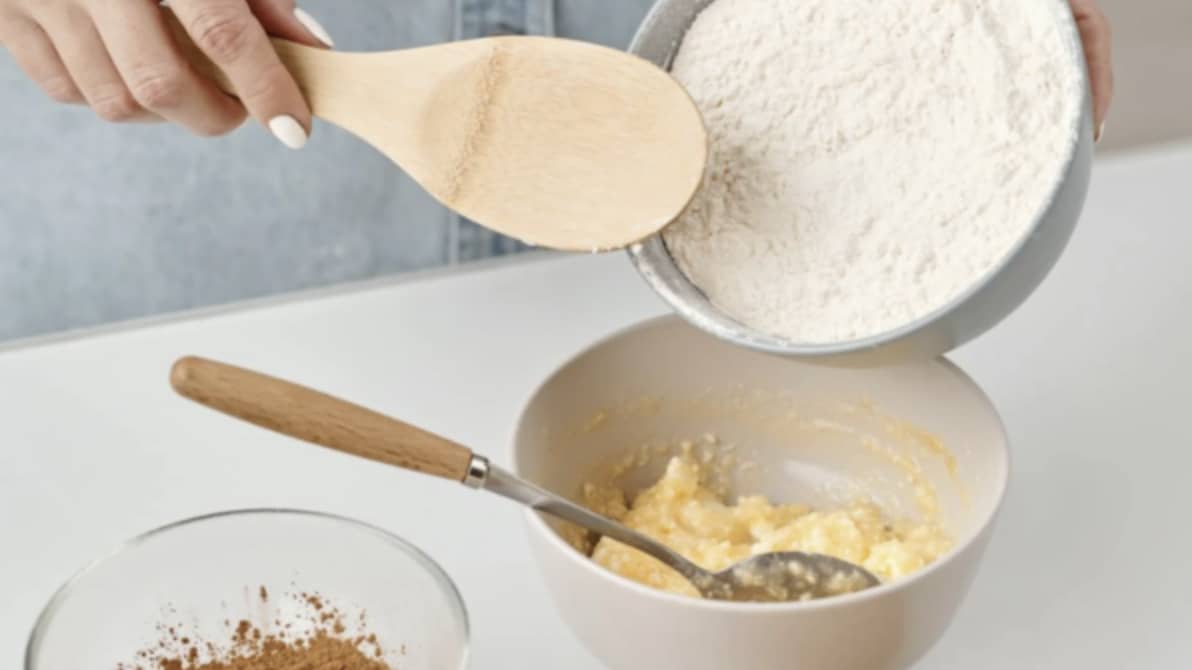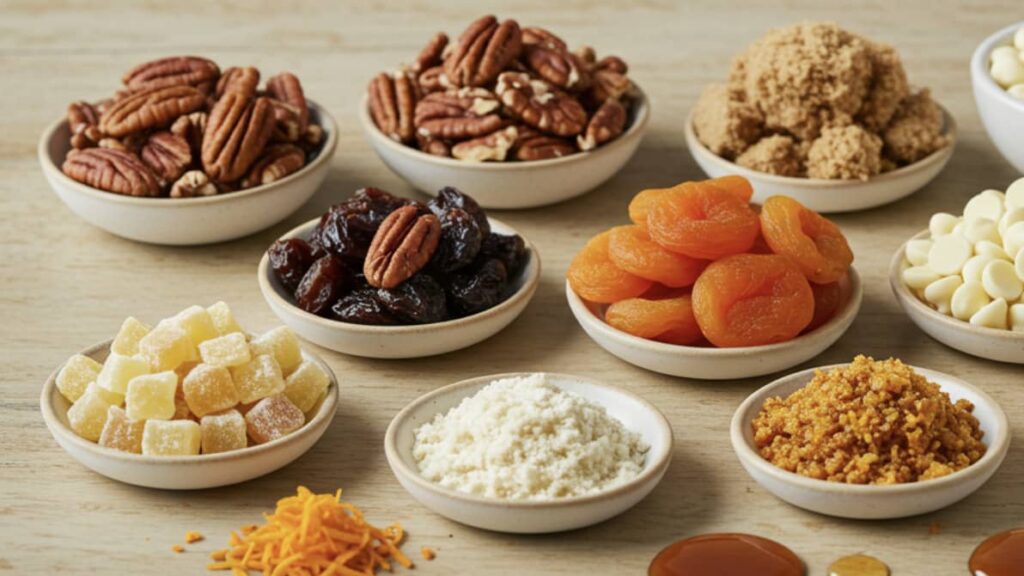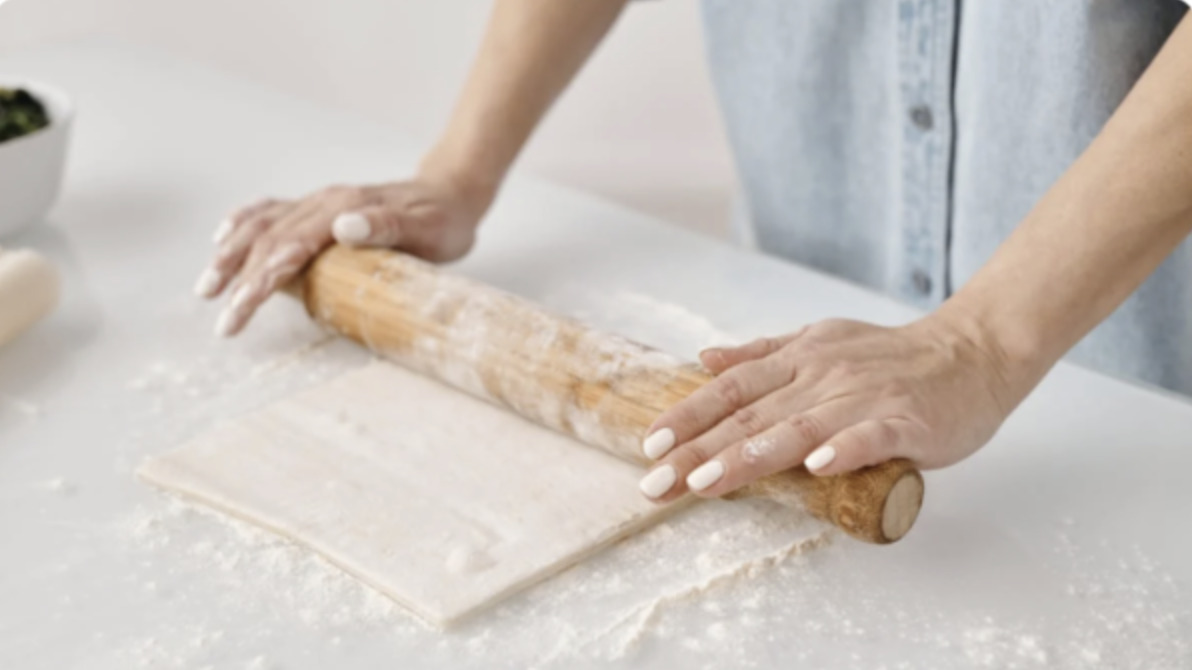Cinnamon rolls are one of those irresistible treats that almost everyone loves. Whether you’re making them for a weekend breakfast, a holiday celebration, or simply to enjoy with a hot cup of coffee, cinnamon rolls never disappoint. The warm, sweet, and spiced aroma of cinnamon filling your home is enough to make anyone’s mouth water. But what are the key ingredients that make cinnamon rolls so special?
In this article, we’ll dive into the main ingredients you’ll need to make the perfect cinnamon rolls from scratch. From the dough to the filling, to the delicious frosting, you’ll discover what each component does to create that perfect, soft, fluffy, and flavorful roll. So, if you’re ready to bake the ultimate cinnamon rolls, keep reading!
Table of contents
Cinnamon Rolls
Cinnamon rolls, also known as cinnamon buns, are a type of sweet, yeast-leavened bread, often rolled with a cinnamon-sugar filling and topped with a rich icing. They have their roots in Sweden, where they’re called “Kanelbullar,” but today they are enjoyed worldwide in many different variations.
These warm, gooey rolls are a perfect balance of textures and flavors. The dough is soft and pillowy, while the cinnamon-sugar filling adds the right amount of spice and sweetness. Topping it all off is the creamy, often sweet icing that ties everything together.
Whether you prefer them with a sticky glaze or a rich cream cheese frosting, cinnamon rolls are a versatile treat that can be enjoyed by everyone, no matter the occasion. But to get the perfect cinnamon roll, it all starts with the right ingredients.
Why Are Cinnamon Rolls So Popular?
Cinnamon rolls have become a beloved classic in the world of baked goods, and it’s no mystery why. Their popularity has soared not just because of their irresistible taste, but because they embody comfort, nostalgia, and a sense of warmth. Here’s why they’re so popular:
- Versatility: Cinnamon rolls can be enjoyed as a breakfast treat, a dessert, or even a snack. They’re perfect for almost any occasion, from family breakfasts to holiday celebrations.
- The Aroma: There’s something magical about the smell of cinnamon baking in the oven. It’s warm, inviting, and comforting – instantly making any home feel like a cozy haven.
- Ease of Customization: You can make cinnamon rolls your own by adding ingredients like raisins, nuts, chocolate chips, or even changing up the frosting to suit your taste.
Now that you know why people love cinnamon rolls, let’s talk about the main ingredients that make these tasty pastries possible.
The Core Ingredients of a Perfect Cinnamon Roll

Cinnamon rolls aren’t just made from one or two ingredients—they’re a delicate balance of multiple components that come together to create the perfect bite. Let’s go through the key ingredients that make cinnamon rolls so delicious.
Flour: The Foundation of Your Dough
Flour is the primary ingredient in cinnamon rolls that gives the dough its structure. Most cinnamon roll recipes call for all-purpose flour, as it has the right balance of protein to create soft, elastic dough. The flour works with the yeast to help the dough rise and become fluffy as it bakes.
You can also use bread flour if you want a slightly chewier texture, but it’s not essential for a great cinnamon roll. The flour serves as the base, but it’s what you add to it that makes the magic happen!
Yeast: The Secret to Soft and Fluffy Rolls
Yeast is the MVP when it comes to making cinnamon rolls light and fluffy. It’s a living organism that ferments the sugars in your dough and creates carbon dioxide, which makes the dough rise. This process gives the rolls their airy texture and prevents them from being dense and heavy.
There are two types of yeast you can use for cinnamon rolls: active dry yeast and instant yeast. Both will work, but instant yeast is often preferred because it doesn’t require proofing (activating the yeast with warm water) before you add it to your dough. You can simply mix it in with the dry ingredients, saving time.
Sugar: Adding Sweetness to Your Cinnamon Rolls
Sugar is the ingredient that adds sweetness to your dough and filling, but it does more than just sweeten the recipe. It also feeds the yeast, helping the dough rise. It creates a golden brown color when baked, and it’s essential for making that delightful cinnamon-sugar swirl.
The sugar you use in cinnamon rolls is typically granulated, but brown sugar can also be used in the filling for an extra depth of flavor. The slight molasses flavor in brown sugar adds a little extra richness to the cinnamon rolls, making them even more irresistible!
Cinnamon: The Star of the Show
No cinnamon roll would be complete without cinnamon! This spice is the star of the show, giving cinnamon rolls their signature flavor. You can’t have a proper cinnamon roll without the rich, sweet, and slightly spicy kick that cinnamon provides.
When choosing cinnamon for your rolls, it’s important to use freshly ground cinnamon for the best flavor. You’ll be using it in the filling, so it should be the right balance of sweetness and spice to complement the other ingredients.
Butter: For Richness and Flakiness
Butter is what makes your cinnamon rolls so rich and flaky. It provides moisture to the dough and adds a lovely richness. The butter in the dough also helps to create a soft texture. Additionally, butter is used in the filling to make the cinnamon-sugar mixture stick and melt into the dough.
Don’t skimp on the butter when making cinnamon rolls! It’s one of the key ingredients that ensures your rolls are tender, flavorful, and melt-in-your-mouth good.
Salt: The Essential Flavor Enhancer
While salt is often seen as an afterthought, it’s actually an essential ingredient in cinnamon rolls. A pinch of salt balances out the sweetness of the dough and filling, enhancing the overall flavor. It also helps to strengthen the gluten in the dough, which contributes to the structure of the rolls.
So, while you might not taste the salt directly, it’s playing a crucial role in bringing out the other flavors and ensuring your cinnamon rolls don’t taste overly sweet.
Milk: The Creamy Addition
Milk is what helps to bring everything together in the dough. It adds moisture, tenderness, and a slightly creamy texture to the dough. Milk also helps to activate the yeast and contributes to the rich flavor of the rolls.
You can use whole milk for the creamiest, richest dough, but you can also use low-fat milk or dairy-free alternatives if preferred. Whatever you choose, make sure the milk is warm, not hot, as this will help the yeast to rise.
Optional Ingredients for Enhanced Flavor

While the core ingredients mentioned above will give you the basic cinnamon roll, there are optional ingredients that can take your rolls to the next level. These ingredients are entirely up to you, depending on the flavor profile you’re aiming for.
Eggs: Binding and Enriching the Dough
Eggs are often added to cinnamon roll dough for a richer texture and flavor. They help bind the ingredients together and provide moisture, making the dough more tender. Eggs also help with the structure of the rolls, ensuring they rise properly and hold their shape.
Vanilla: Adding Warmth and Depth to Flavor
Vanilla is one of those simple ingredients that can make a big difference. Adding a teaspoon or two of vanilla extract to your cinnamon roll dough (or frosting) brings a wonderful depth and warmth to the flavor. It pairs beautifully with the cinnamon, enhancing the overall sweetness of the rolls without overpowering the other ingredients.
If you want an extra touch of luxury, consider using vanilla bean paste or freshly scraped vanilla seeds instead of extract for an even more aromatic flavor.
Cream Cheese: A Twist on the Classic Frosting
Many cinnamon roll recipes include a creamy frosting, and one popular choice is cream cheese frosting. The tanginess of the cream cheese balances out the sweetness of the rolls, making it a perfect complement. It also gives the frosting a rich, creamy texture that’s indulgent but not too heavy.
You can mix cream cheese with powdered sugar, vanilla, and a bit of milk or cream to create the frosting. Alternatively, you can add butter for a more traditional buttercream consistency, or go for a more minimalist glaze with just powdered sugar and milk for a lighter option.
Common Problems When Making Cinnamon Rolls and How to Solve Them
Making cinnamon rolls from scratch isn’t always foolproof, and there are a few common problems you might encounter. But don’t worry! Most issues can be easily fixed with a bit of know-how. Let’s look at some of the most frequent issues bakers face and how to solve them.
Dough Not Rising?
If your cinnamon roll dough isn’t rising, it could be due to several reasons:
- Yeast Issues: If the yeast is old or expired, it won’t activate properly. Always check the expiration date and make sure you’re using fresh yeast.
- Water Temperature: Yeast needs warm water (around 110°F or 43°C) to activate. If the water is too hot, it can kill the yeast. If it’s too cold, the yeast will stay dormant.
- Not Enough Time: Dough needs time to rise. If you’re rushing through the process, it might not have enough time to double in size. Let it rise in a warm, draft-free place for 1-2 hours.
Solution: Ensure your yeast is fresh, the water is at the correct temperature, and allow the dough the time it needs to rise fully before moving on to the next steps.
Rolls Too Hard or Too Dense?
If your cinnamon rolls turn out hard or dense, it’s likely due to overworking the dough or not letting it rise enough.
- Over-Kneading: Kneading dough is essential for developing gluten, but if you overdo it, the dough can become tough and dense. Aim for a soft, elastic texture.
- Underproofing: If the dough hasn’t had enough time to rise properly, the rolls will be dense because they haven’t had a chance to expand and form air pockets.
Solution: Knead the dough until it’s smooth and elastic (but not too much), and let it rise in a warm place until it’s doubled in size. If you’re short on time, you can do a quick proof by turning your oven on to the lowest setting for a few minutes, then turning it off and placing the dough inside.
Too Much Cinnamon or Sugar?
If your rolls are too sweet or overly cinnamon-y, it could be because you’ve used too much of these ingredients in the filling. While cinnamon rolls should be sweet and aromatic, it’s important to find the right balance.
Solution: When measuring the cinnamon and sugar for the filling, be sure to follow the recipe closely. If you’re experimenting, start with a small amount and adjust to taste. You can always add more, but it’s hard to take it away once it’s mixed in.
Frosting That’s Too Runny or Too Thick?
The frosting is just as important as the cinnamon roll itself, so getting the right consistency is crucial. If your frosting is too runny, it might slide off the rolls. If it’s too thick, it can be hard to spread.
- Too Runny: This can happen if you’ve added too much milk or liquid. The frosting should be thick but spreadable.
- Too Thick: If the frosting is too thick, it won’t spread evenly. You can add a small amount of milk to thin it out, but be careful not to add too much.
Solution: Start with a small amount of milk or liquid and gradually add more if needed. The frosting should have a smooth, thick consistency that will stay on top of the rolls without dripping too much.
Tips for Making the Perfect Cinnamon Rolls

Making cinnamon rolls might seem like an art, but with the right tips, you can master them in no time. Here are some expert tips to help you make the best cinnamon rolls possible.
Proper Dough Kneading and Proofing
Kneading is one of the most important steps in cinnamon roll preparation. The dough needs to be kneaded for about 5-10 minutes until it’s smooth and elastic. Kneading helps develop the gluten, which gives the dough its texture and structure.
Once you’ve kneaded the dough, let it proof (rise) in a warm place for about 1-2 hours, until it’s doubled in size. The more time you allow for proofing, the fluffier and softer your cinnamon rolls will be.
How to Achieve the Right Consistency for Your Frosting
The frosting should have a smooth, creamy texture that’s easy to spread. To achieve the right consistency, beat your frosting ingredients together well until there are no lumps. If it’s too thick, add a small amount of milk at a time until it’s spreadable. If it’s too runny, add a little more powdered sugar to thicken it up.
The key is to start with a thick base and adjust as needed—remember, you can always add more, but it’s harder to fix if you’ve added too much liquid!
Baking at the Right Temperature
Cinnamon rolls bake best at a moderate temperature, usually around 350°F (175°C). Too high of a temperature can cause the rolls to burn on the outside before they’re fully cooked on the inside, while too low can result in underbaked dough.
Preheat your oven properly and check the rolls about 20 minutes into baking. They should be golden brown on top and baked through the middle. If you’re unsure, you can use a toothpick to check for doneness—if it comes out clean, your rolls are ready!
Conclusion: The Magic Behind the Perfect Cinnamon Roll
Making the perfect cinnamon roll is all about using the right ingredients and techniques. From the flour and yeast that create the dough’s structure to the cinnamon and butter that give the rolls their signature flavor, every ingredient plays a crucial role in creating that melt-in-your-mouth experience.
By following these guidelines, you can master the art of making cinnamon rolls and enjoy them fresh from the oven any time you like. Remember, practicing regularly will help you improve, so don’t feel discouraged if your first batch isn’t exactly as you imagined. With time, you’ll be able to bake cinnamon rolls that rival those from any bakery!

